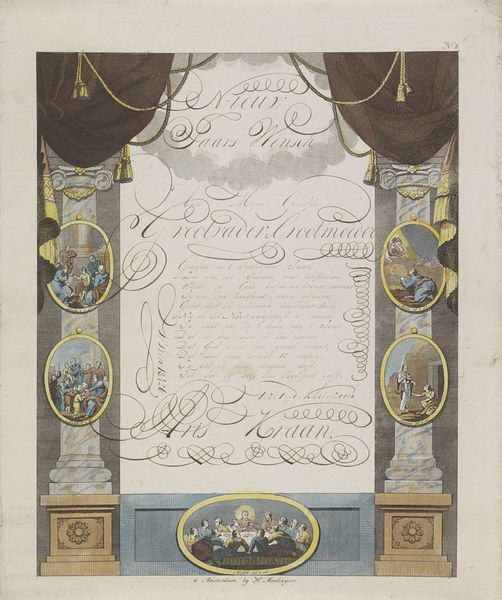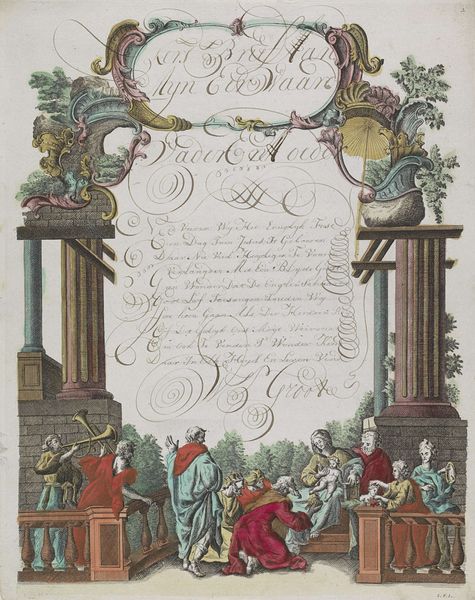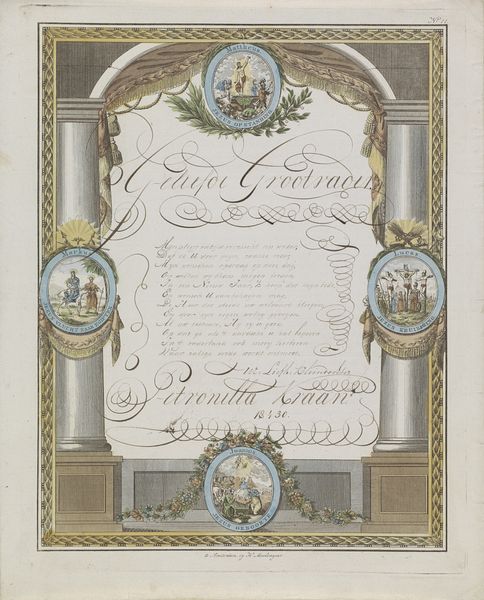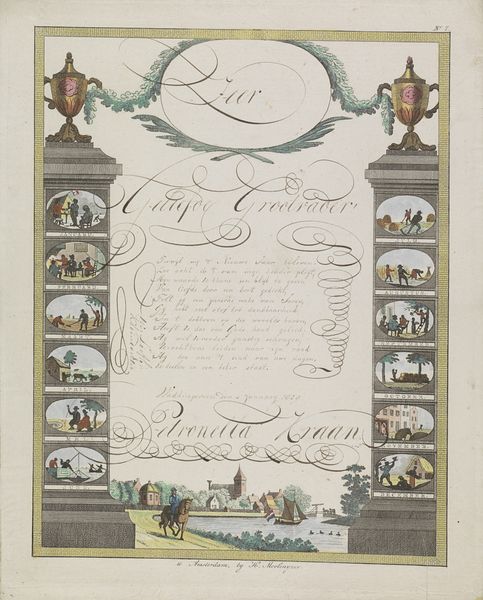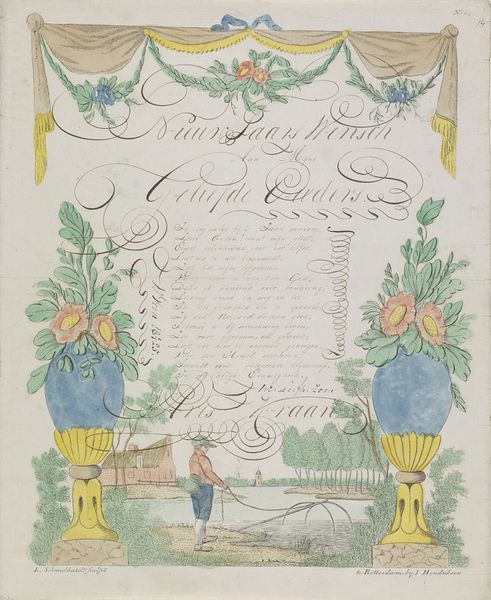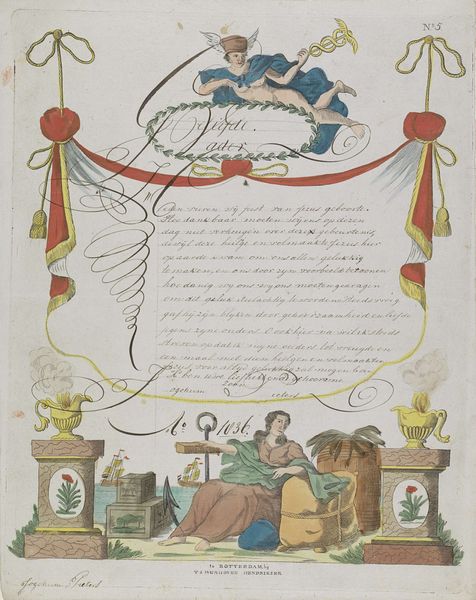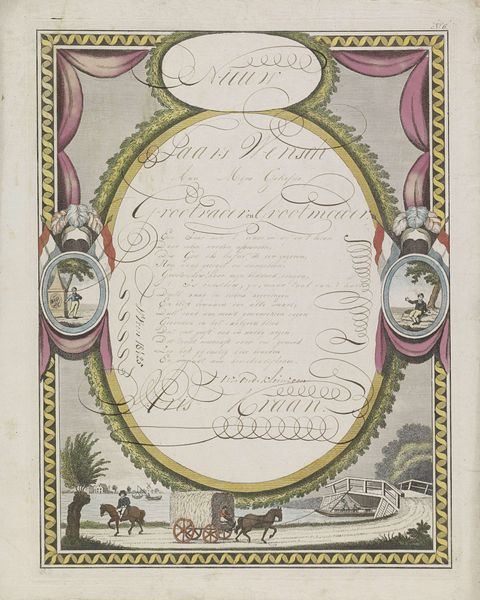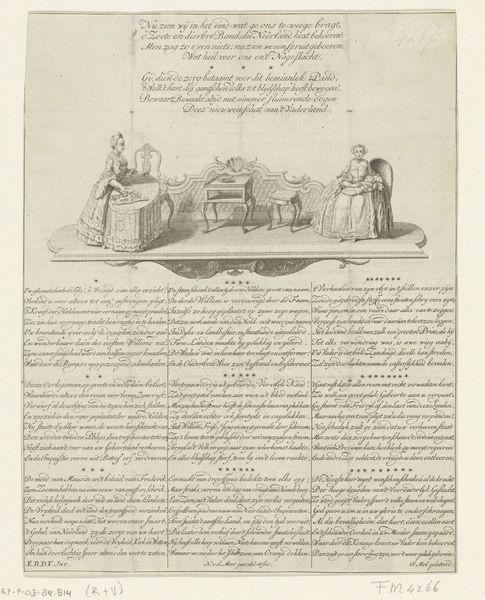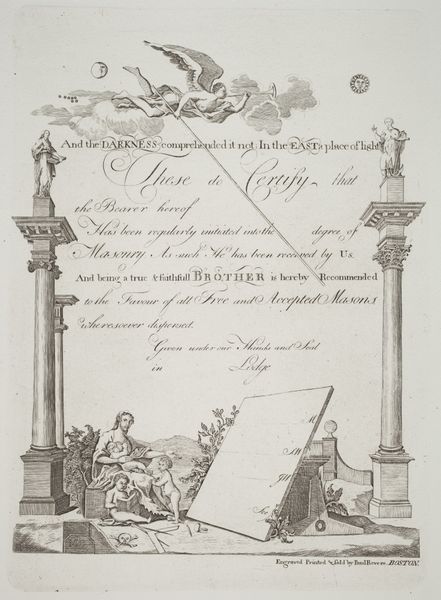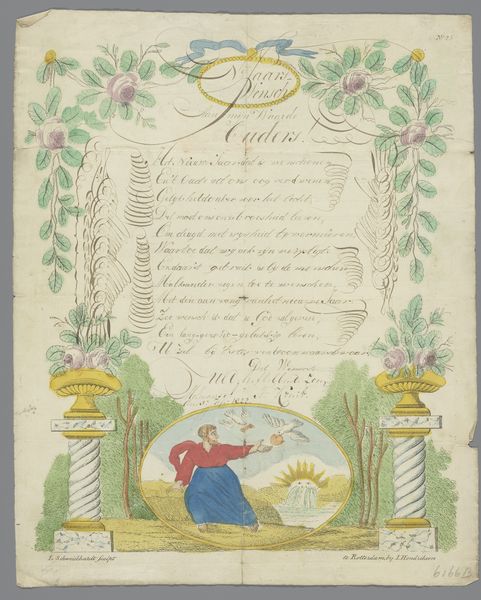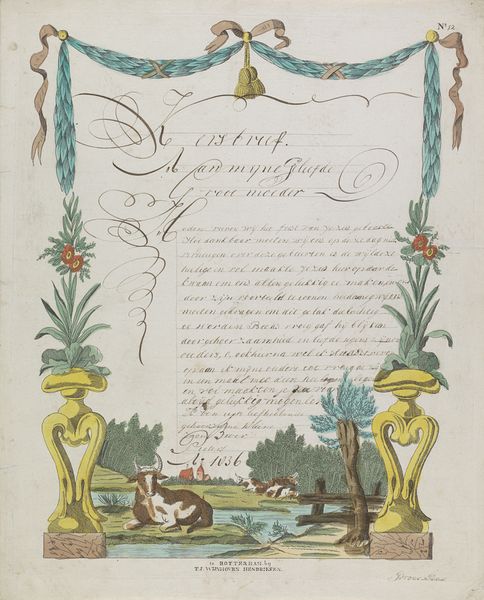
painting, print, watercolor
#
painting
# print
#
watercolor
#
intimism
#
folk-art
#
watercolour illustration
#
genre-painting
#
watercolor
Dimensions: height 412 mm, width 337 mm, height 373 mm, width 306 mm
Copyright: Rijks Museum: Open Domain
Curator: Let’s consider the means of production evident in "Wensbrief met drinkende boeren" from 1792-1847 by Hendrik Moolenyzer. The print and watercolour techniques speak volumes about its purpose and accessibility. Editor: It’s such an intriguing piece! The use of watercolour gives it a delicate feel, but the scenes of celebrating peasants add a grounded, almost earthy quality. What's your read on this? Curator: Well, look closer at the printmaking aspect. The lines, likely etched or engraved, suggest a process involving skilled artisans and potentially a system of patronage. The paper itself - think about its manufacture, distribution, and cost in that period. This wasn't a mass-produced object as we understand it today. It implies a specific consumer in mind. Who was the audience, do you think? Editor: Given the subject matter – drinking farmers – maybe it was meant for someone connected to agriculture or the merchant class involved in trade of some sort? Someone who appreciated or even idealized the rural life? Curator: Precisely! Consider the materiality in relation to its message. Is it folk art, or something more refined using elements of folk tradition? The materials used are themselves carriers of social meaning, reflecting hierarchies of access and taste. Is there an emphasis of craft over fine art here? Editor: I hadn't really considered the materiality informing the reading of the artwork itself, I will have to research further, this has changed how I view not only this art, but also art in general. Curator: That’s the essence of a materialist perspective! By tracing the life of the materials, from production to consumption, we gain deeper insights into the artwork’s historical context and the network of relationships that shaped its creation and reception.
Comments
No comments
Be the first to comment and join the conversation on the ultimate creative platform.

